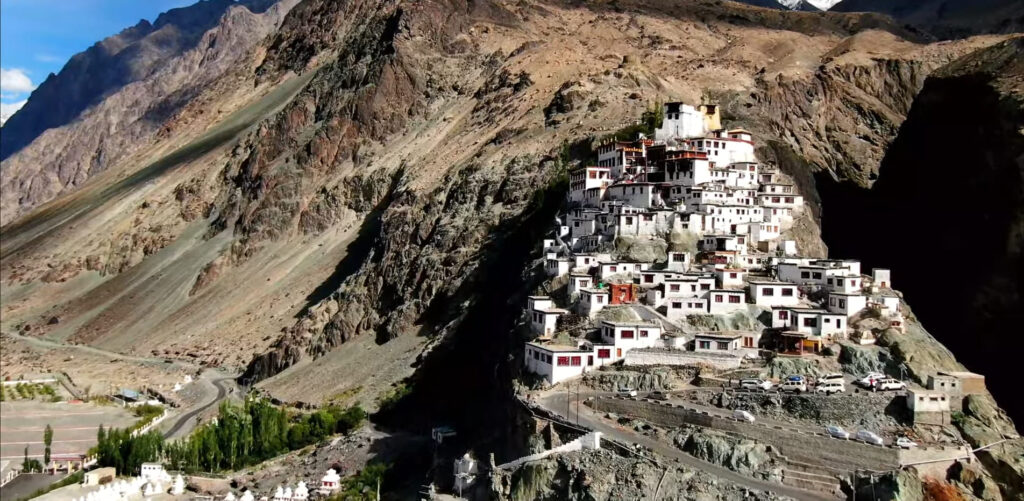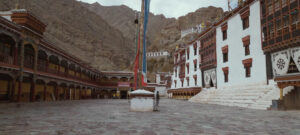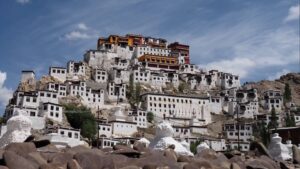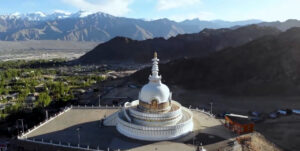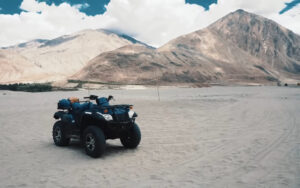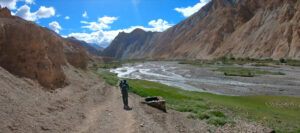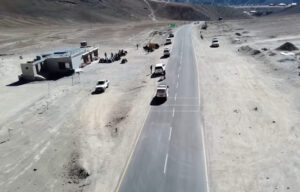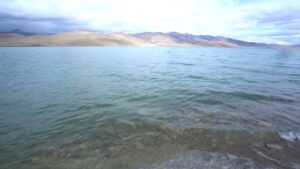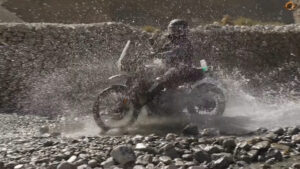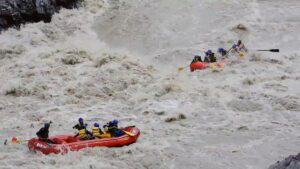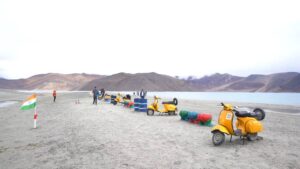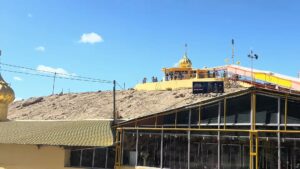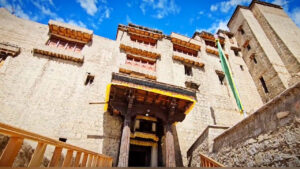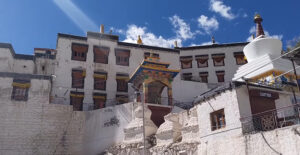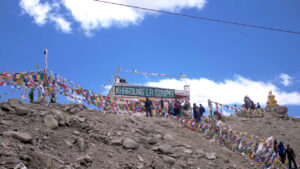If you’re heading to Ladakh and skipping Nubra Valley — you’re seriously missing out. And if you make it to Nubra, Diskit Monastery is one of those places you just have to stop at. It’s calm, quiet, and perched on a hill with a view that makes you forget you ever owned a phone.
The place is famous for its giant statue of Maitreya Buddha — it’s 106 feet tall and feels like it’s watching over the valley. Locals say it protects the village and brings peace, and honestly? It kind of feels that way.
History of Diskit Monastery
Diskit Monastery is old — like 600+ years old. It was built in the 14th century by a monk named Changzem Tserab Zangpo. He was a student of the Gelugpa tradition (aka the Yellow Hat guys in Tibetan Buddhism).
The monastery is linked to the bigger Thiksey Monastery, but this one feels way more tucked-away and authentic. The design is classic Ladakhi — whitewashed buildings, narrow steps, colorful prayer flags, and woodwork that creaks in the cold.
Getting There
- From Leh: Around 120 km — takes 5–6 hours depending on your breaks.
- How? By car, shared taxi, or bike.
- Route: You’ll cross the Khardung La Pass, which is one of the highest motorable passes in the world (and yes, it’s cold and windy — but absolutely epic).
- Airport Nearby: Kushok Bakula Rimpochee Airport, Leh.
Pro tip: Start early from Leh, grab breakfast in South Pullu, and enjoy the ride. The views change dramatically once you start descending into Nubra.
What to Actually See When You’re There
The Maitreya Buddha Statue
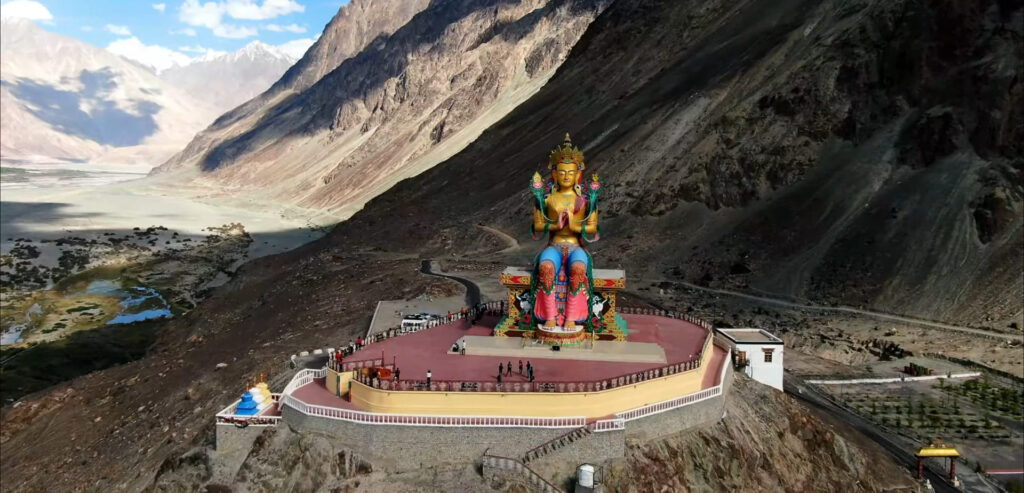
It’s huge. It’s colorful. And it’s hard to look away from. Sitting on a hill just before the monastery, the statue faces the Shyok River and the Pakistan border. It’s more than just a photo spot — the silence up there makes you want to sit and just… breathe.
The Monastery Itself
Inside, the prayer hall (Dukhang) has big old drums, statues of protectors, and dusty shelves full of handwritten texts. You might hear monks chanting or kids playing around outside. It’s real and raw, not dressed up for tourists.
Lachung Temple
Just a short climb above the main monastery — it’s one of the oldest temples in Nubra and holds a statue of Tsongkhapa. It’s peaceful and usually quiet, with prayer flags dancing in the wind.
Dosmoche Festival (If You’re Lucky)
Happens around February, during Losar (Ladakhi New Year). Locals dress up, monks perform Cham dances (masked rituals), and there’s music, prayers, and food. It’s Ladakh’s spiritual energy on full display.
What Else Is Nearby?
- Hunder Sand Dunes: Yes, there’s a desert up here! Go for a camel ride (those two-humped Bactrian camels are adorable).
- Shyok River: Quiet spots along the river are perfect for a walk or just sitting with your feet in the icy water.
- Villages like Hunder & Turtuk: Super charming. Apricot trees, stone houses, and the warmest people you’ll meet.
Travel Tips
- Altitude hits hard — take a day or two in Leh before heading up.
- Layer up! Weather changes fast, especially at night.
- Power bank is your best friend. Electricity isn’t always reliable in remote spots.
- Ask before taking photos, especially of locals or inside temples.
So, Why Visit Diskit?
Because it’s not just a sightseeing spot — it’s a feeling. It’s peaceful but powerful. Grand but grounded. And once you’ve stood beneath that giant Buddha and watched the sun dip behind the mountains, you’ll understand why so many people fall in love with Ladakh.
Quick FAQs for the Curious
What is the Best time to go?
May to September — good weather, open roads, and green valleys.
Where to stay?
No rooms inside the monastery, but lots of cozy homestays in Diskit or Hunder. Local families will treat you like one of their own.
Can I go by bike?
Absolutely. Many people ride from Leh — just go slow, carry spares, and check the weather.
When’s the Dosmoche Festival?
Usually in February, but ask locals for exact dates — they follow the Tibetan calendar.
Is photography allowed?
Yes, outside for sure. Inside the prayer hall, always ask the monks first — they’re usually kind and will guide you.

